Philips Screeneo HDP1590TV Review
Philips Screeneo HDP1590TV
An innovative projector that can create an 100-inch screen just 15-inches from wall
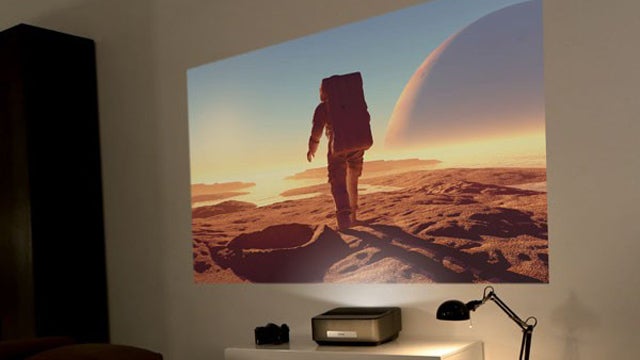
Sections
- Page 1 Philips Screeneo HDP1590TV Review
- Page 2 Hardware and Picture Quality Review
Verdict
Pros
- Extremely convenient by projector standards
- Pretty attractive design
- Highly flexible
Cons
- Limited black depth and brightness
- Fairly soft images, given the price
Key Specifications
- Review Price: £1499.99
- 50-100 inch image only 12-15 inches from wall
- Ultra-short throw projection
- Powerful Android user interface
- Direct file playback from USB
- Powerful speaker system
What is the Philips Screeno HDP1590TV?
If you like the idea of having a 100-inch TV but don’t want the inconvenience of a gigantic black box in your living room you need to check out something like the Philips Screeneo HDP1590TV. It’s an ultra short-throw projector that can create a huge projected image even when it’s just a few centimeters away from a wall.
The Philips Screeneo gets rid of much of the inconvenience of fitting a projector into a normal-size living room, and is extremely flexible in several respects. However, image quality limitations mean it is not one true home cinema fans should consider, especially given it costs £1500.
READ MORE: Projectors Reviews
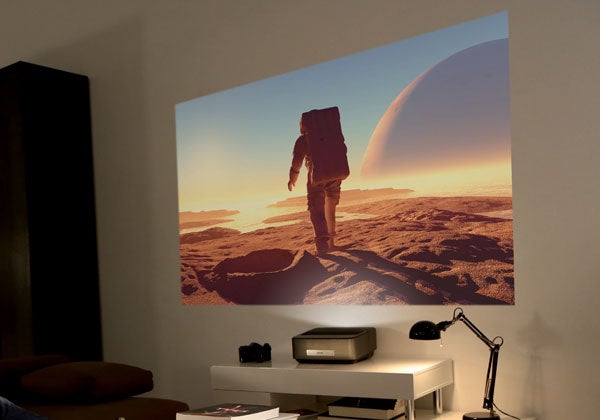
Philips Screeneo HDP1590TV – Design and Features
As one of the first ultra-short projectors we’ve seen to be clearly marketed as a home entertainment gadget rather than a classroom tool, it’s good to see that the Philips Screeneo does not have a massive lens housing begging to be scratched. Instead the lens is hidden away.
From a quick glance it appears a bit more like an oversized iPod dock, with speaker grille sides and a silvery front panel that looks like a DVD tray. Appearances prove wholly deceptive.
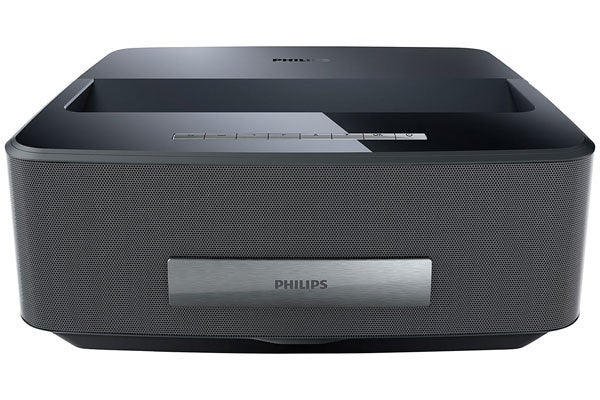
The iPod dock-style indent on the top is where the Screeneo outputs its images, and the silver front panel is actually just a cover for a bunch of additional ports. At 30cm wide it’s not pico-projector-portable, but it does at least look like it belongs in a lounge rather than a cinema. There’s a carry handle on its back too, making it a cinch to lug the Screeneo between houses – you also get a carry case for such eventualities.
The Philips Screeneo is also quite ridiculously feature-packed. As well plugging into standard sources over HDMI, composite or VGA, you can play music through the thing over Bluetooth, and play movies, run apps and even games directly from the Screeneo.
Here’s where things get really interesting. The Philips Screeneo runs Android, with a top layer UI that makes it look like a fairly standard bit of home cinema kit – focusing on inputs and settings rather than anything else. It doesn’t have the Google Play app store installed, but with an SD card slot and USB port on the thing and full file system access, you can easily get a third-party app store installed.
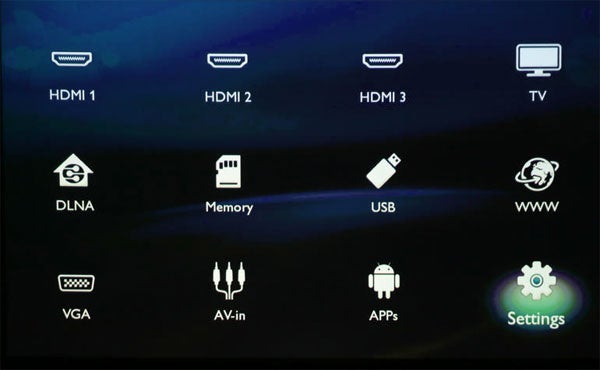
While you wouldn’t want to use the included remote to play games, with inbuilt Wi-Fi, Bluetooth and 4GB internal memory, you could make this into a games console of sorts if you buy a separate Bluetooth controller. There is an awful lot of fun to be had with the Philips Screeneo.
Coming back down to normal home cinema territory a bit, the Screeneo also has an inbuilt standard-def Freeview TV tuner, support for playing back a bunch of file formats from USB devices, including MKV, and speakers. Integrated speakers in projectors are generally dreadful, but these ones aren’t too bad.
The Screeneo has a stereo pair of side-firing drivers plus a dedicated bass driver, powered by a 26W amp. You wouldn’t want to replace a 5.1 system with this setup, but they will do the job for an impromptu movie night, offering a nice even tone and a bit of bass warmth, if not depth. It’s on par with a half-decent portable Bluetooth speaker. What’s more, because the projector is short-throw, the sound is actually coming from close to the picture, rather than from behind as with a conventional projector.
If you’re a real sound fan, you can hook up some powered speakers over Bluetooth or the headphone output. There are also optical and phono audio outputs, but these don’t seem
quite as handy unless you’re planning on using the Screeneo as a source,
rather than just a projector.
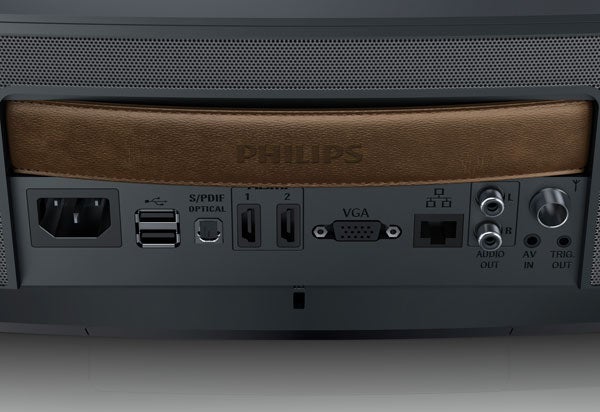
You can do an awful lot with the Screeneo, much as you have to be a bit of a geek to work out some of the most fun bits. That said, getting the basics working is no more difficult than the usual cable A in socket B affair you get with any home entertainment gear.
ROUND-UP: Best Projectors


